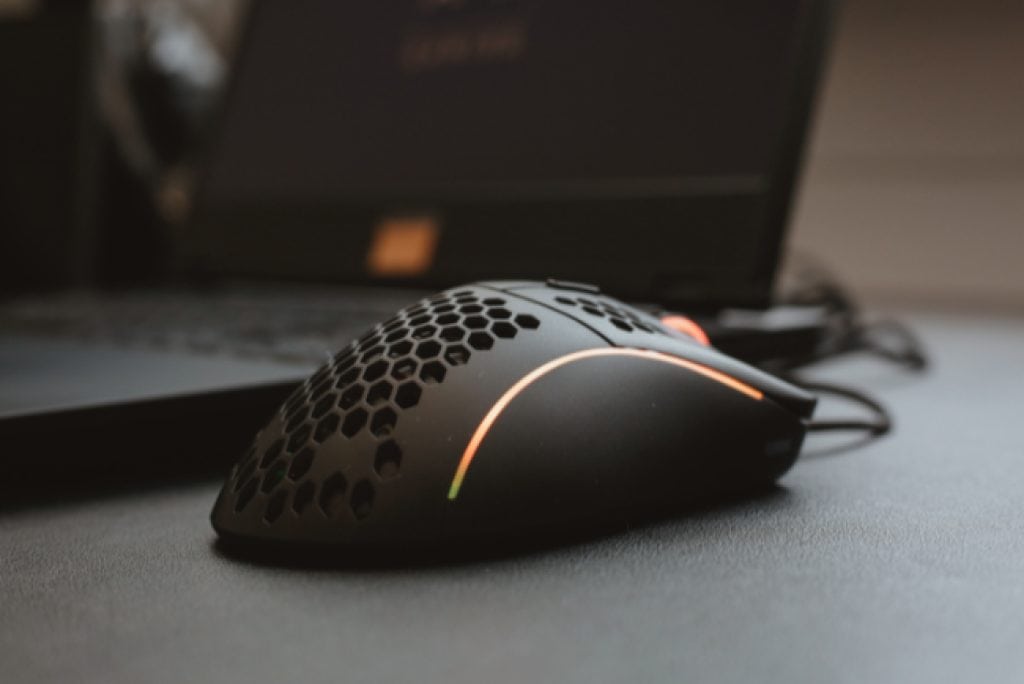What is Mouse Smoothing? The Cursor Effect

Computer peripherals encompass a myriad of features and settings that transform user input into on-screen actions. One such feature that subtly influences this dynamic is mouse smoothing.
It is a nuanced function that filters cursor movements to enhance the fluidity of on-screen motion. While this smoothing effect can create a seamless interface experience for everyday tasks, it carries a significant drawback for the gaming community, where precision and the raw translation of every movement matter immensely.
The Role of Mouse Smoothing in User Experience
When discussing the nuanced realm of user interfaces, the topic of mouse smoothing frequently surfaces as a component that plays a subtle yet critical role in enhancing the user's interaction with their computer. Mouse smoothing is more than just a technical concept; it's an integral part of the design philosophy that prioritizes the seamless fusion of human intention with digital response.
The Mechanics of Smooth Cursor Movement
Mouse smoothing is essentially a software algorithm designed to interpret and refine the signals received from a mouse's hardware. By analyzing the velocity and direction of the mouse, the algorithm can predict and adjust the cursor's path, ironing out any erratic movements or tremors inherent in human hand motions.
This leads to a smoother cursor experience, where the pointer gracefully glides across the screen, seemingly in perfect sync with the user's intentions.
Enhancing the User Interface with Mouse Smoothing
The user interface benefits from mouse smoothing by providing a less cluttered and more controlled navigational experience. Particularly in graphic design and casual computing, where sudden jumps or breaks in cursor movement can disrupt the workflow, mouse smoothing can be a blessing.
It allows for a level of cursor control that feels intuitive and unobtrusive, often going unnoticed due to its behind-the-scenes operation.
Balancing Smoothing with Responsiveness
The challenge in implementing mouse smoothing lies in striking the right balance between smoothness and responsiveness. Too much smoothing can lead to a perceivable lag between the user's hand movement and the cursor's on-screen reaction, often described as input lag.
On the other hand, insufficient smoothing might leave too much raw mouse movement, resulting in a jittery cursor. The key is to provide just enough smoothing to create a feeling of fluidity without sacrificing the immediacy of control that users expect.
Mouse Smoothing Across Different Applications
Different applications may call for varying levels of mouse smoothing. For instance, creative applications like digital painting or photo editing software often implement more aggressive smoothing algorithms to aid in the creation of smooth lines and curves.
In contrast, applications that require high precision with minimal lag, like spreadsheets or text editors, may opt for minimal to no mouse smoothing to ensure that cursor movement remains tight and highly responsive to user input.
The Invisible Hand of User Comfort
One of the least celebrated yet significant roles of mouse smoothing is its contribution to user comfort. By filtering out the high-frequency vibrations and minor directional changes, mouse smoothing can reduce the strain on the user’s hand and wrist.
Over extended periods, this can make a noticeable difference in the user's comfort, reducing fatigue and potentially mitigating the risks of repetitive strain injuries.
Mouse Smoothing in Gaming: A Double-Edged Sword

The gaming world constantly seeks the holy grail of precision and responsiveness, and herein lies the crux of the debate around mouse smoothing. While smoothing algorithms can enhance the cursor's flow on the screen, they can also introduce a layer of processing that may detract from a gamer's performance.
It is a feature that, depending on who you ask, can either be seen as a needless complication or an imperceptible aid in the background of a user's gaming experience.
The Pursuit of Precision in Gaming
Accuracy and response time are the cornerstones of a satisfactory gaming experience. Gamers often rely on their ability to make quick, precise movements, and any delay or unpredictability can be the difference between victory and defeat.
Mouse smoothing, by design, interpolates mouse movements, which can lead to a slight but critical delay. This discrepancy is often unacceptable in a gaming context, where the raw, unfiltered input is the gold standard.
Smooth Movements Versus Raw Input
The rationale for using mouse smoothing in non-gaming scenarios doesn't hold the same weight in the realm of gaming. While smooth cursor movement is aesthetically pleasing and can reduce on-screen jitter, the gaming environment demands every action be translated with high fidelity from hand movement to in-game reaction.
Any smoothing of the input can result in a feeling of disconnection, as if the game is not keeping up with the player’s actions.
The Gamer's Predicament with Mouse Smoothing
For the casual gamer, the effects of mouse smoothing might be negligible, but for the competitive player, it can be a source of frustration. When split-second decisions are crucial, the input smoothing that causes even milliseconds of delay is seen as a disadvantage.
This has led to a sizable portion of the gaming community actively seeking ways to disable or minimize mouse smoothing effects in their gaming setups.
Mouse Smoothing Impact on Different Gaming Genres
The impact of mouse smoothing can vary greatly across different gaming genres. In fast-paced first-person shooters or competitive strategy games, the precision and speed of cursor movement are paramount, and as such, mouse smoothing is often disabled by default or avoided by players.
Conversely, in narrative-driven or turn-based games where timing is less critical, the negative effects of mouse smoothing may be less pronounced or even go unnoticed.
Disabling Mouse Smoothing for Competitive Play
Gamers who prioritize performance have developed a host of strategies to circumvent mouse smoothing. These range from adjusting in-game settings to modifying operating system preferences.
Furthermore, gaming mice and peripheral software offer options to fine-tune or entirely disable smoothing features, providing gamers with the tools they need to achieve the direct and immediate response they demand.
The Quest for Raw Input in Gaming
The allure of unadulterated control in the virtual gaming world drives a relentless pursuit of raw input, where every nuance of a player's physical command is translated directly to on-screen action. Gamers demand that the hardware and software they interact with respect and reflect their split-second decisions with impeccable accuracy, creating a gaming experience that feels as natural as possible.
Understanding Raw Input
Raw input refers to the direct use of mouse data by a game, circumventing any interference or processing by the computer's operating system. This unfiltered data is prized for its ability to deliver the exact mouse movements to the game engine, providing a one-to-one correlation between player action and in-game response.
This precision ensures that the player's skill is the primary determinant of success within the game, not the limitations of their equipment or software settings.
Why Gamers Prefer Unprocessed Inputs
In high-stakes gaming environments, the argument for raw input is simple: it provides a competitive edge. The absence of smoothing, acceleration, and other forms of input manipulation means that players can trust their muscle memory and reflexes to interact with the game as intended.
This trust in one's tools is essential in the heat of competition, where confidence in every click and movement can make a monumental difference.
The Technical Side of Achieving Raw Input
Achieving raw input often requires both hardware capable of precise tracking and software that supports direct input methods. Gaming mice are specifically designed with sensors that offer high accuracy and minimal latency, while gaming software and drivers provide settings that allow for the raw input mode.
This combination is crucial for gamers looking to customize their setup to match their preferences and play style.
Customization Options for Gamers
The gaming peripherals market offers an array of customization options to cater to the demand for raw input. From adjustable DPI settings to the ability to turn off mouse acceleration and smoothing, manufacturers have taken note of the community's preferences.
These options give players the ability to tweak their settings until their mouse's behavior on the screen mirrors the movements of their hand with complete accuracy.
The Future of Raw Input in Gaming
The quest for raw input continues to shape the development of gaming peripherals and influence software design. As games become more sophisticated and competitive gaming grows, the demand for equipment that offers an undiluted connection between player and game will only increase.
Manufacturers and software developers are likely to continue to innovate, finding new ways to minimize latency and improve the fidelity of input devices to support the quest for the purest form of input in gaming.
The Impact on Competitive Gaming

Competitive gaming, where the stakes are high and the margins for error are slim, feels the reverberations of any technological nuance, especially mouse smoothing. The impact of such a feature can echo profoundly, influencing game outcomes, player performance, and even the trajectory of competitive gaming as a whole.
Precision and Performance in the Arena
At the core of competitive gaming lies the need for precision. Players spend countless hours honing their skills, and during competition, the expectation is that the hardware will translate their actions flawlessly.
Mouse smoothing, by adding a layer of interpretation to mouse movements, can disrupt the raw precision expected by gamers. The effect of this can range from minor annoyances to significant hindrances that compromise the integrity of the player's skill display.
Equipment Standards for Competitive Play
The ramifications of inconsistent input processing have led to a standardization of equipment in many competitive gaming leagues and tournaments. To ensure a level playing field, specifications often include the disabling of mouse smoothing and other cursor-enhancing features.
This creates an environment where player ability is the focus, and the technology is simply a transparent medium for that skill.
The Psychological Aspect of Mouse Smoothing
Beyond the physical impact, there's a psychological aspect to consider. Players who are sensitive to the slightest variations in input may experience a decline in confidence when they suspect their equipment is not responding accurately.
This mental component can be just as crucial as the physical one, as competitive gaming requires not only skill and strategy but also a strong mental game.
The Role of Mouse Smoothing in Esports
Esports, the competitive edge of gaming, has seen rapid growth and mouse smoothing is a topic of technical scrutiny in this arena. Teams and individuals are often in pursuit of gear that promises the most direct and unaltered feedback.
As a result, the feature has become a focal point in the discussion of fair play and technological equality in competitive events.
Adaptation and Regulation
Regulatory bodies in the esports industry have begun to recognize the importance of hardware and software settings in the fairness of competition. Mouse smoothing and similar features are often regulated, with specific rules set in place to ensure no player has an undue advantage or is subject to unnecessary handicaps due to their choice of equipment or settings.
Conclusion
Mouse smoothing, a feature designed to create a seamless cursor movement, holds a complex position within the sphere of technology, particularly in the context of gaming. Its implications stretch from casual use, where it can contribute to a smoother user experience, to the demanding arena of competitive gaming, where it is often seen as a hindrance to performance.
While some users may appreciate the aesthetic and functional aspects of mouse smoothing, the quest for unfiltered and precise input is a prevailing trend among serious gamers. The pursuit of equipment that supports raw input reflects the community's broader desire for authenticity in the gaming experience—a desire that hardware and software developers continue to address.
Understanding the nuances of mouse smoothing and its effects on gaming is critical for both consumers and manufacturers. For gamers, especially those involved in competitive play, it represents a significant factor in the configuration of their gaming setup.
In turn, industry responses to these preferences are shaping the evolution of input devices and the standards for competitive gaming technology.
Ultimately, the debate over mouse smoothing underscores the ongoing dialogue between user preference, technological advancement, and the ever-growing demands of a diverse and sophisticated gaming community. Whether seen as a beneficial feature or an unnecessary complication, its role in the grand scheme of gaming technology is undeniable and warrants consideration from anyone engaged in the digital gaming experience.


